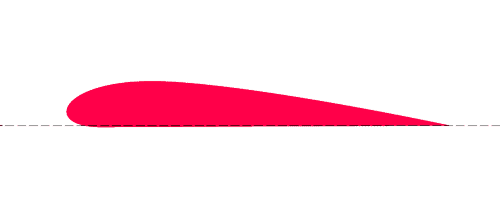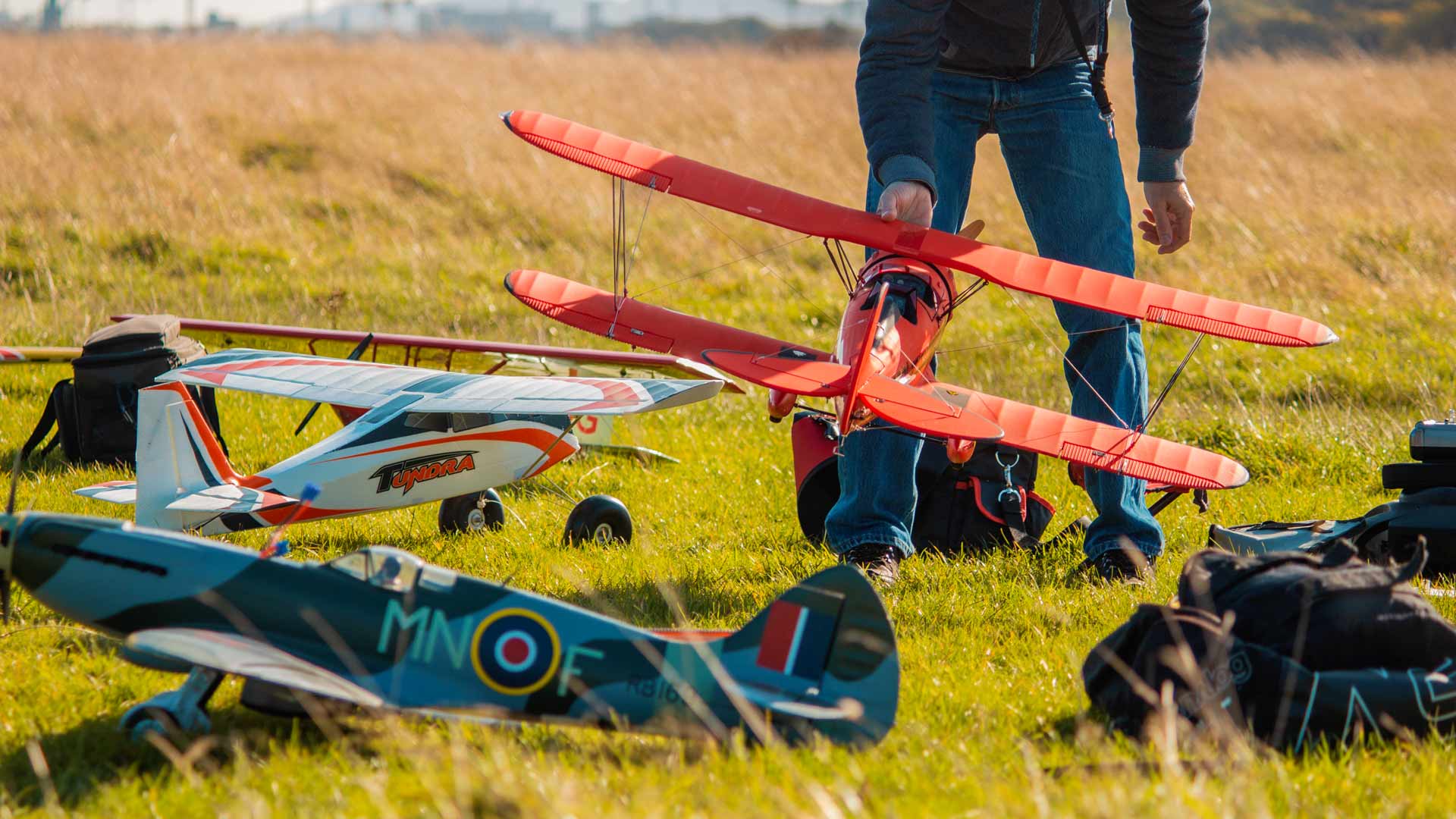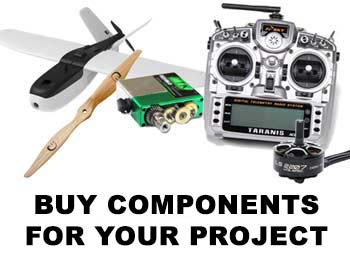When talking about airfoils things can get complicated and technical very quickly, equations, physics… and all that stuff. Let’s keep it simple here while having a look at the recommended airfoils for different models.
Content
- Basics about airfoils
- Type of airfoils
- Which Airfoil should I use for my type of airplane?
- How to get the airfoil for my design?
Basics

An airfoil is a special shape that will produce lift when it’s moved through the air in one direction, the shape can be seen if we look at the cross-section of a wing, a lot of physics is involved in the study of these shapes, to produce lift efficiently, and there are lots of shapes that can be used for different scenarios, not all are good for every situation, so if you plan to use an airfoil for a slow airplane there’s a good airfoil for that. Or for the contrary, if you want a fast airplane, you need a completely different airfoil.
Looking at the wing of a bird a shape of an airfoil is seen, of course, birds normally fly at slow speeds so most of them will have an undercambered airfoil, which will produce more lift at slow speeds. The airfoil changes naturally along the span of the wing just like nowadays in our airplanes.
Airplane wings have a slightly different airfoil adjusted for the performance they need.
How they work is still in debate, but we can mention the effects involved with this process: The Bernoulli effect creates a low pressure on top of the surface, the third law of Newton which simply states that the force of the air pushing the bottom of the wing will drive it upwards. And the Coanda effect makes the air stick to the top surface of the wing even if it has a curvature and therefore will drive the air downwards creating lift, I think these three effects work together to produce lift.
Take a look at the basic parts of an airfoil, you may have seen these terms.

Type of Airfoils
It all depends on the application, every airfoil has its own characteristics. Take a look at the most common generic shapes.
Under-cambered
Good for slow flying models, generate lots of lift but also creates more drag.

Flat-Bottom
Better for the ease of build, but create more drag than a more common airfoil like the Semi-Symmetrical.

Semi-Symmetrical
Best lift-drag ratio for most applications, sport airplanes, sailplanes, and semi-aerobatic planes.

Symmetrical
Mostly for aerobatic planes, cuts through the air evenly, and generates the same lift in up or down orientation. Great for precision aerobatics.

Reflexed
Offers auto stability properties, it’s used mostly on flying wings for that.

KF (Kline–Fogleman) Airfoil
They work by displacing air in a vortex pocket behind the step, used only in model airplanes.

Flat
Not aerodynamically efficient but can be used in simple models, cambering it a bit helps to create a pseudo airfoil.

Which airfoil should I use for my type of airplane?
We just saw different types of airfoils that can be used, in small model airplanes, you don’t need an extremely precise type of airfoil for your model, because you wouldn’t notice a big difference in performance unless you are aiming for a world record, or you’re flying bigger models, in fact, full-size airplanes take the best advantage of the aerodynamics than the small ones.
The truth is that almost nobody will know how to select an airfoil based on airfoil data, because it’s not necessary, it’s not worth the trouble. This is from an article from airfieldmodels.com
If you want to design unique planes that fly for fun, then stay in the realm of reason and make your airfoil close to the shape of airfoils used by other planes of roughly the same type. Don’t get hung up about it. If you can’t decide then copy an airfoil in use on a model and scale it to the right size for your model.
With that let’s see some actual airfoils for your planes.
Clarck-Y
The Clark-Y airfoil is widely used in general purpose aircraft designs, and much studied in aerodynamics over the years, it’s one of the most common designs used in model airplanes, many variations can be used, thickness, flat bottom, etc.
SD7037
For gliders use an SD7037 a popular airfoil for that application.
MH60
For flying wings, MH60 is recommended, you can choose from its different variations which have different thicknesses.

NACA 0015
For aerobatic airplanes, NACA 0015, it also has different thicknesses, it’s a great symmetrical airfoil.
How to get the airfoil for my design?
The internet will help you with that, visit airfoiltools.com and search for the airfoil, then click on “Send to airfoil plotter” it will take you to a page where you will define the measurements of your airfoil, defining the Chord is enough, the rest can be left as default, then click plot and the file will be generated, but you have to download the one you’re going to use, normally a PDF is sufficient which then can be printed and used as a template.
Another way is by downloading the .DAT files or coordinate files to generate the airfoils on your CAD software, there are different ways to do it, but I like to keep it simple, I use a free software called Concord made by Martin Hepperle, and it’s available in his website mh-aerotools.de, I just drag and drop the .DAT file on the input, and select an output format of .DXF to be readable by AutoCAD, that simple.
You can also use any other coordinates format from the website Airfoil database, where there’s a huge list of airfoils.





January 16, 2021, 8:27 pm
Very elucidative and easy comprehensive as your usual tutorials !
January 17, 2021, 4:47 am
So interesting and simple article
December 12, 2021, 1:18 am
Outstanding, Thank you for sharing, Just getting started with rc planes, I would rather build it from scratch as apposed to buying a basic kit, Once again many thanks.
February 2, 2023, 10:00 pm
Great article! My favorite all time airfoil is the RG15, I have built a couple of balsa wings and one foam wing with this foil and it always amazes me!
March 14, 2023, 11:18 pm
Thanks for catering to us that are just starting out. I am building 2 joy plane minis , 1 with dihedral ,1 flat airfoil wing